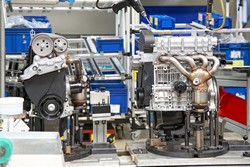New tool for efficient vibration testing
Accurate simulation of excitation effects plays a pivotal role in the design and testing of vehicle products, especially those containing delicate, high-value electronics. Random excitations are typically modelled as Gaussian signals and their frequency spectrum is represented by the inverse fast Fourier transform. However, in practical applications, excitation signals often show strong non-Gaussian properties. Within the RANGE (Simulation of random non-Gaussian excitations in environmental testing and computer modelling for better product engineering of vehicle systems) project, researchers presented novel approaches for simulating non-Gaussian random signals by modifying IFFT phase manipulation. The first method used for controlling kurtosis by manipulation of the IFFT phases was based on a polynomial transform with time-frequency domain swapping. The second method for generating non-Gaussian random excitations with increased kurtosis involved an analytical expression for IFFT phases based on kurtosis equation. All these methods were incorporated in a first-version software called LMS Test.Lab Kurtosis Control that is designed to work with the LMS SCADAS data acquisition hardware. This vibration control system enables researchers to perform more realistic testing and thereby homologate the tested products. RANGE's new product helps conduct vibration tests more efficiently, enabling qualification tests with vibration control. It is thus possible to conduct accelerated lifetime tests; one can decrease in a controlled manner the failure rate in a particular resonance frequency by increasing the kurtosis and preserving the power spectral density level. In addition, researchers developed prototype code for a next-generation software that should allow more advanced kurtosis control that is also linked with fatigue damage. RANGE's new tool offers low-cost simulation testing, helping ensure that costly and sensitive products will function effectively under external excitation and vibration conditions. This in turn should increase the competitiveness of the European automobile and aircraft industries.



